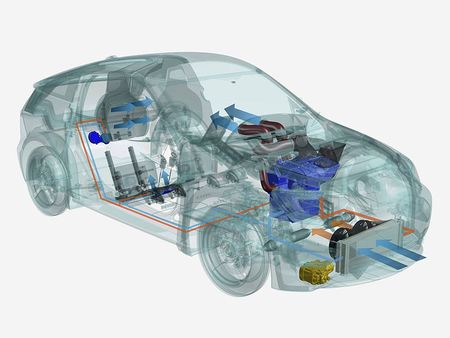Thermal management

Compared to conventional vehicles, the heating and air conditioning play a major role regarding electric vehicles as the energy required for these functions has to be obtained from the energy storage. Moreover, it is not only the interior but also the electrical energy storage which have to be conditioned. Thus, depending on driving conditions, the thermal management has a significant impacton energy consumptionand therefore also on the range and the thermal ergonomics of the vehicle.
As the waste heat of a permanently running traction motor can only be used to a limited extent and as there exist high demands on size and weight, completely new concepts are needed. Alternatives to conventional heating and cooling concepts are fossil heating systems and electrically driven coolingmethods. Both alternatives are to be realised in the Visio.M project.
One goal is to reduce or increase the airtemperature of the interior by using local, ergonomically positioned, amore energy-savingal ternative heating method, without reducing the thermal comfort. Besides, control strategies for such complex conditioning systems have not yet been extensively examined. An optimised scheme and efficient system architecture can help to significantly extend the range.
To develop acooling and heating concept that is suitable for small electric vehicles is the objective to achieve by the Chair of Thermodynamics (Lehrstuhl für Thermodynamik). Due to the boundary conditions like weight and limited drive power, completely new approaches for heating and cooling of the interior have to be found and investigated.